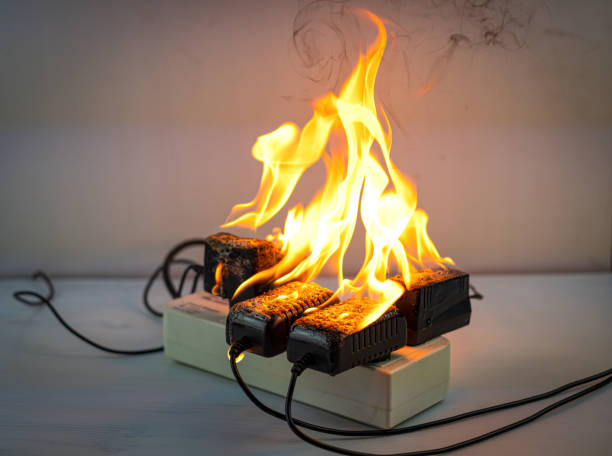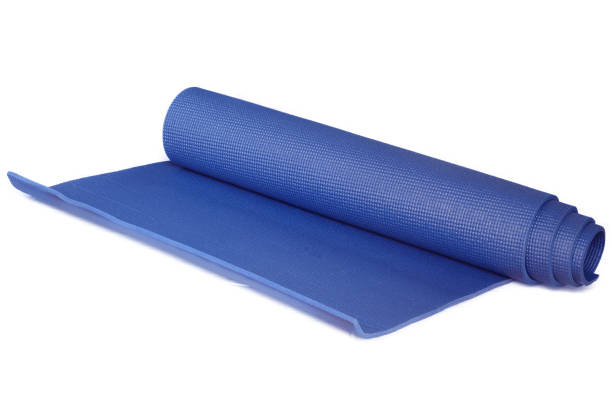Espuma EVA (Acetato de Etileno-Vinila) é um leve, flexível, e material de absorção de choques comumente usados na embalagem, tapetes de piso, solas de sapatos, equipamento esportivo, e brinquedos infantis. Enquanto oferece conforto e durabilidade, Muitas pessoas estão preocupadas com suas propriedades químicas e de segurança contra incêndio - especialmente quando usadas em crianças ou em ambientes quentes.
Neste artigo, Vamos explorar se a espuma de eva é inflamável, a que temperatura ele derrete, se é considerado espuma resistente ao calor, e se O material de eva é tóxico ou seguro para bebês. Vamos quebrá -lo.
Eva é inflamável de espuma?

Com que facilidade o eva espuma pega fogo?
A espuma de eva é considerada combustível, o que significa que pode acender e queimar sob as condições certas. Não se aprimora e pode sustentar uma chama se exposta a abrir fogo ou calor extremo.
- Eva começará a degradar ou emitir fumaça antes da ignição se aquecida além de seu ponto de amolecimento.
- Uma vez aceso, Queima com uma chama visível e emite gases tóxicos, incluindo ácido acético e monóxido de carbono.
- Ao contrário de alguns termoplásticos, Eva pode derreter e pingar enquanto queima, que podem piorar os riscos de incêndio, espalhando chamas para superfícies adjacentes.
Classificação inflamabilidade de Eva
A maioria da espuma EVA padrão é classificada por UL 94 Hb, o nível mais baixo na escala de inflamabilidade da UL. Esta classificação indica que a espuma queimará lentamente quando mantida em uma posição horizontal e não resistirá ao fogo efetivamente.
- Ul 94 As espumas EVA com classificação V estão disponíveis, mas requerem retardadores de chama química adicionais.
- Essas versões são usadas em interiores automotivos, embalagem eletrônica, e isolamento industrial onde a segurança contra incêndio é mais crítica.
Quando a inflamabilidade deve ser uma preocupação?
Você deve ser especialmente cauteloso com a espuma de eva em:
- Workshops com ferramentas elétricas ou fontes de calor
- Veículos que podem atingir altas temperaturas interiores no verão
- Áreas de recreação infantil, especialmente onde brinquedos eletrônicos ou elementos de aquecimento estão próximos
- Espaços externos expostos ao sol, Como o calor solar pode acelerar o amolecimento e a degradação
Que temperatura a espuma EVA derrete em?

Amolecimento vs.. Ponto de fusão
A espuma de eva começa a amolecer a 85 ° C a 90 ° C (185° F a 194 ° F.) e vai derreter completamente em torno de 220 ° C a 260 ° C (428° F a 500 ° F.). No entanto, Pode começar a perder suas propriedades mecânicas bem antes de atingir o ponto de fusão real.
- Exposição prolongada a Altas temperaturas ambientais (Por exemplo, Dentro de um carro quente ou sob luz solar direta) pode tornar o EVA espuma macio, pegajoso, ou deformado.
- A distorção pode ocorrer mesmo em temperaturas tão baixas quanto 60 ° C (140° f), particularmente em espumas de menor densidade.
A espuma de eva pode ser considerada resistente ao calor?
Eva não é realmente uma espuma resistente ao calor, Embora possa tolerar calor leve sem dano.
- É adequado para aplicações como palmilhas, piso, e preenchimento de proteção, onde a exposição ao calor é mínima.
- Para qualquer uso envolvendo fontes diretas de calor ou radiante (como fornos ou máquinas industriais), Eva é inadequado e inseguro.
- Alternativas como polietileno reticulado (Xlpe) ou o neoprene pode oferecer melhor resistência ao calor para essas aplicações.
É o material de eva tóxico?

Compreendendo as preocupações em torno de produtos químicos de espuma de eva
Muitas pessoas perguntam, “É o material de eva tóxico?"Especialmente quando é usado em tapetes de ioga, tapetes de quebra -cabeça, ou produtos para bebês. A resposta depende em grande parte do que os aditivos são usados durante a fabricação.
- O material EVA base é considerado não-tóxico e é usado em dispositivos médicos, embalagem de alimentos, e produtos infantis.
- No entanto, As preocupações surgiram em torno de um produto químico chamado formamida, Um agente de amolecimento às vezes usado em espumas de eva para aumentar a flexibilidade.
O que é formamida e por que é controverso?
A formamida tem sido associada a riscos potenciais à saúde, particularmente com inalação prolongada ou contato com a pele em áreas mal ventiladas.
- Pode causar olho, pele, e irritação respiratória em altos níveis.
- Em alguns estudos, Ele mostrou toxicidade de desenvolvimento em animais de laboratório, solicitando regulamentos mais rígidos.
- A União Europeia e vários países restringiram o uso de formamida nos brinquedos e tapetes infantis.
Como identificar a espuma EVA segura
Para garantir que você está comprando é produtos com certificação segura de espuma eva, procurar:
- Etiquetas que dizem “livre de formamida” ou “espuma eva não tóxica”
- Certificações como EN71, ASTM F963, ou conformidade da CPSIA
- Declarações claras sobre como ser livre de BPA, livre de ftalato, e livre de látex
Marcas respeitáveis geralmente publicam suas folhas de dados de segurança materiais (Msds) e cumprir com os padrões de teste de segurança infantil.
Quais são as desvantagens da espuma de eva?
1. Risco de incêndio em ambientes de alto calor
Conforme explicado anteriormente, A espuma de EVA pode acender e liberar vapores tóxicos em calor alto. Não é seguro para uso próximo:
- Aquecedores ou chamas abertas
- Máquinas industriais
- Eletrônicos que geram calor
- Exposição não comparada à luz solar (Por exemplo, painéis, Solas de sol)
2. Baixa resistência UV e clima
A espuma de eva se degradará com exposição e intemperismo prolongados de UV, especialmente quando usado ao ar livre.
- Torna -se quebradiço, descolorido, ou rachado sob sol direto.
- Os estabilizadores UV podem retardar este processo, Mas o material ainda não é ideal para uso permanente ao ar livre.
3. Limitações ambientais
Eva não é biodegradável e pode contribuir para o desperdício de aterro.
- Enquanto reciclável, Geralmente acaba no lixo devido à infraestrutura limitada de reciclagem.
- Comparado a borrachas naturais ou alternativas biodegradáveis, Eva tem uma pegada ambiental maior.
4. Sensibilidade química
EVA pode ser afetado por:
- Solventes como acetona ou álcool
- Óleos ou graxas, o que pode causar amolecimento ou deformação
- OverStreching, levando a lágrimas ou deformação permanente
Se você está usando o EVA em qualquer ambiente de estresse químico ou mecânico, Pode não se sustentar com o tempo.
Sobre nós
No caso KinFish, Pensamos além do comum.
Como fabricante de estojo personalizado, Criamos soluções exclusivas para clientes de todos os setores - de equipamentos médicos a externos e eletrônicos.
O que nos torna diferentes? Nós nos concentramos em parcerias de longo prazo construídas na confiança. Se você precisa de um elegante, áspero, ou caso EVA personalizado, Caso KinFish está aqui para dar vida às suas idéias. Vamos crescer juntos.
Conclusão: Você deveria se preocupar com a espuma de eva?
A espuma de eva é um amplamente utilizado, versátil, e principalmente material seguro quando usado nas configurações corretas. No entanto, É importante entender seu comportamento de fogo, limitações de calor, e composição química, Especialmente se você planeja usá -lo em torno de crianças ou em ambientes expostos a altas temperaturas.
Tiradas finais
- Eva é inflamável de espuma? Sim, pode acender e deve ser mantido longe de calor e chamas.
- Que temperatura a espuma EVA derrete em? Entre 220 ° C a 260 ° C, Mas suaviza muito mais cedo.
- É EVA espuma segura? Sim, Quando certificado como não tóxico e Formamida livre.
- É o material de eva tóxico? Não inerentemente, Mas cautela deve ser tomada com menor qualidade, versões não certificadas.
- Pode ser considerado espuma resistente ao calor? Somente em ambientes de baixo calor; Não é adequado para uso de alta temperatura.
- A espuma de eva é segura para bebês? Sim, Os produtos de espuma da EVA feitos para crianças devem atender aos rígidos padrões de segurança.
Se você está selecionando EVA espuma para produtos para bebês, embalagem, ou piso, Certifique -se de escolher testado, alta qualidade, e materiais seguros certificados.
















